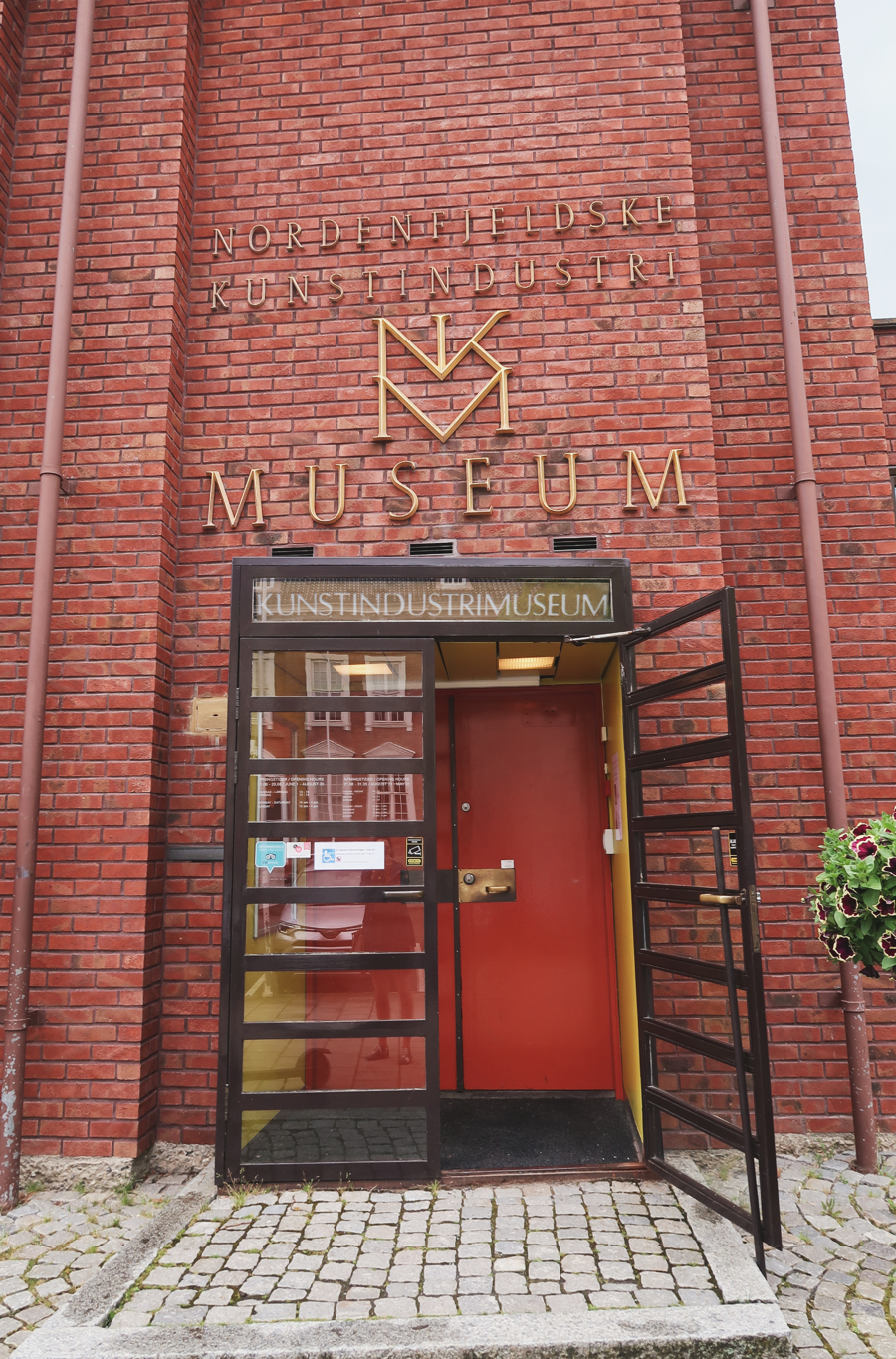
This weekend I visited the Nordenfjeldske Kunstindustrimuseum, or the Museum of Decorative Arts and Design here in Trondheim (update February 2022: the museum building has been closed for renovations since February 2021 and will reopen at a later date. In the meantime, they show pieces from the collections at other locations in Trondheim. Visit the website for more information). I really love museums, but for one reason or another when we moved to Tromsø in 2015 it took me around a year before I finally made it to any of Tromsø’s museums. I was determined not to let that happen in Trondheim, so on a rainy Sunday I ventured out to spend a couple of hours at NKIM.
The museum houses a permanent collection of art and artifacts, but I was especially interested in seeing the temporary exhibition they’re currently (co-)hosting, the Hannah Ryggen Triennial 2019: New Land (the other host of New Land is the Hannah Ryggen Center in Ørland). Hannah Ryggen was a textile artist born in Sweden who spent most of her life in Ørland, Norway, about an hour’s boat ride from Trondheim. She predominantly worked with tapestry weaving, and part of why I find her so interesting is that a lot of her work was very overtly political – she was born in 1894 and was coming of age and beginning to work in a time where fascism was on the rise, and much of her work could be considered social commentary against injustice. I had come across Ryggen’s name before but I hadn’t realized quite how political her work was until I went to the exhibition. (She was also trained in painting but was self-taught as a weaver, a fact about her which I enjoyed.)
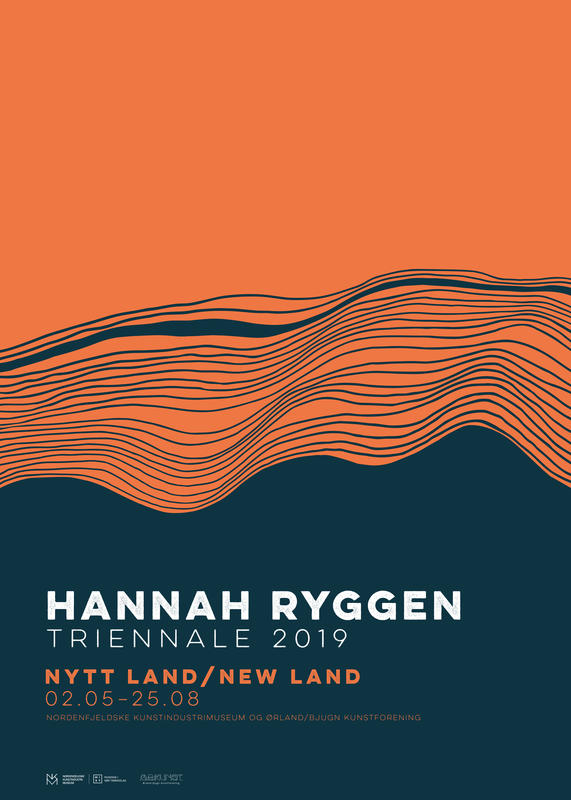
NKIM houses the largest collection of Ryggen’s works, but the exhibition itself brings together both works by Ryggen as well as contemporary works by other artists. The curator’s statement is well worth a read. I enjoyed seeing all the pieces, but two artists in particular stood out to me.
The first piece that stopped me in my tracks was Liquid, by Faig Ahmed, an Azerbaijani artist.

It’s part of a series (you can see the pieces on his website), and there was another piece included in the exhibition, but this one really had an effect on me. The rugs are proper wool rugs, woven by hand and very traditional up until the point that they become incredibly distorted. I’ve never seen anything like it.
The other artist whose work really spoke to me was Alexandra Kehayoglou, an Argentinian artist. A series of pieces titled Prayer Rugs was her main contribution to the exhibition – primarily smaller pieces, as suggested by the name, and like Ahmed’s work, woolen rugs.
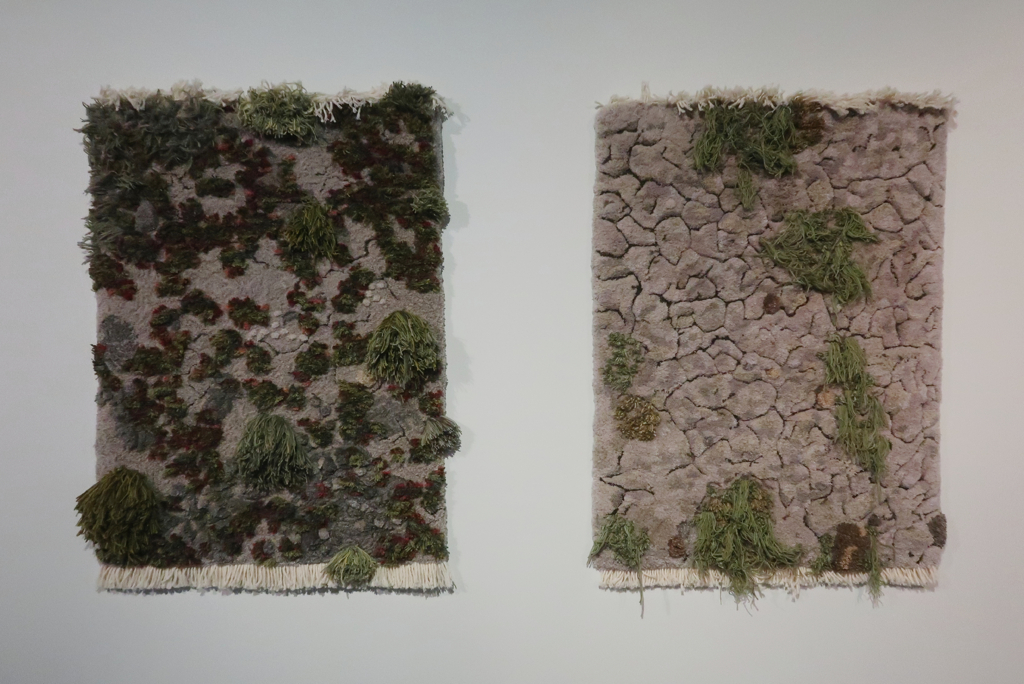
The description provided in the catalogue puts it succinctly: “These tactile works are in memoriam of places that have been altered or destroyed forever. Some of them document environmental destruction, others depict lost landscapes that can never be experienced again.” The tufted rugs represent memories of Kehayoglou’s native landscapes, and to me the tactile nature of the pieces really drives home a sense of what is lost when we alter the landscape, intentionally or otherwise. It comes across in the small size of these pieces, but I imagine it’s even more impactful in one of her larger-scale pieces (just take a peek at this one on her website).
I’d encourage you to check out Kehayoglou’s website because her work is incredibly stunning.
Going back to Ryggen’s work, the piece housed in the museum that had the biggest impact on me was one called Vi lever på en stjerne, or “We live on a star.” The scale of the piece alone is overwhelming, but it was the story behind it that made me emotional. It was originally commissioned for the new government building in Oslo in 1958, the building that was until 2011 the location of the prime minister’s office (among other offices). This building was one of the targets of the terrorist attacks of July 22, 2011, an event that still feels vivid in my memory, though I only experienced it from afar, learning about it while watching the news in an American airport. 77 people died that day because of one right-wing extremist. Eight years on it is still difficult to fathom. The Ryggen tapestry was damaged in the bombing, but it has been stitched back together and now bears a scar, which I was able to examine up close, as it sits in the bottom portion of the tapestry.
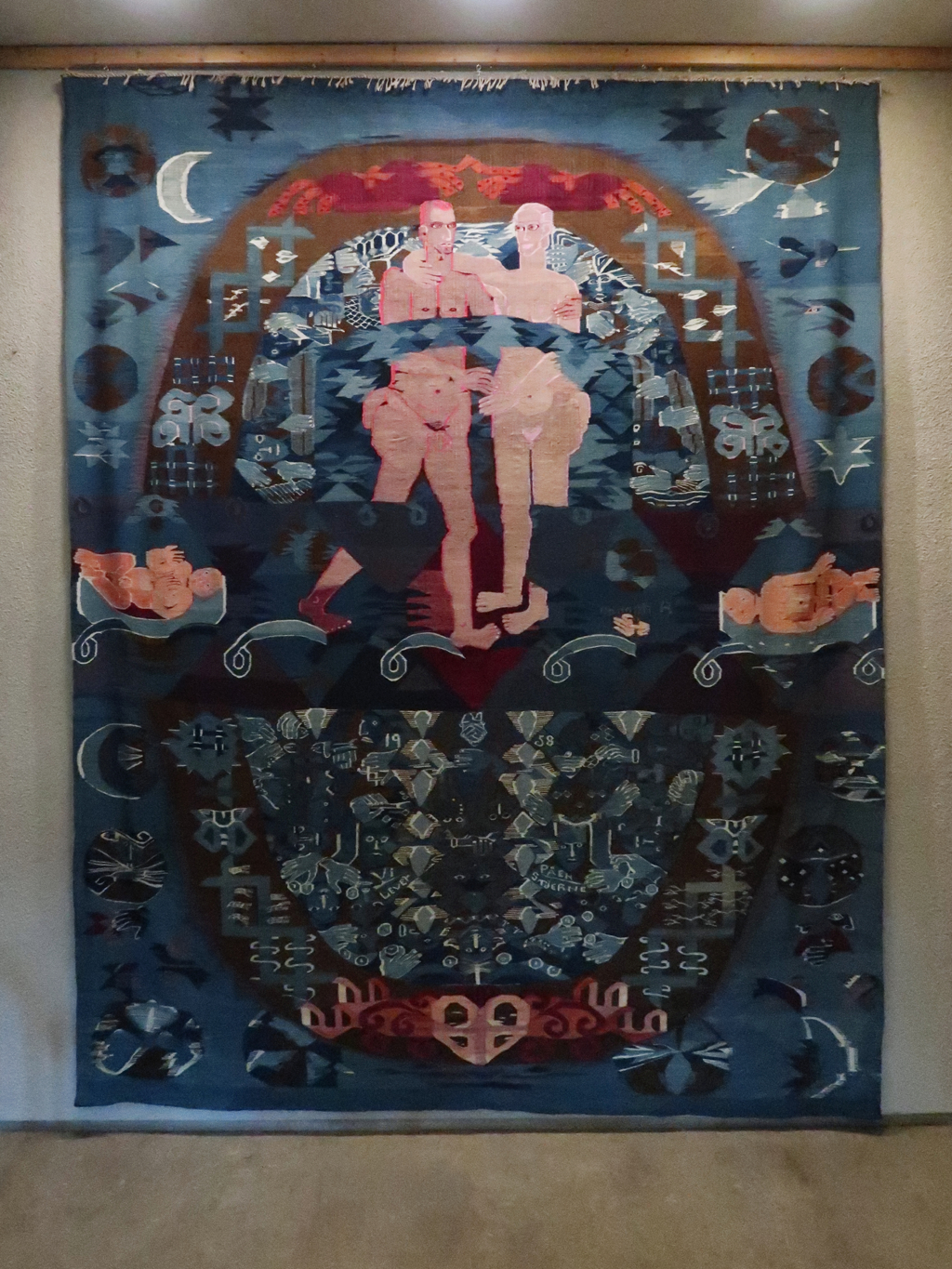
The scale of this piece is difficult to express through a photograph alone (in the museum it’s located in the landing of a large stairway), but this photo of the piece in situ in the government building probably gives a better idea:
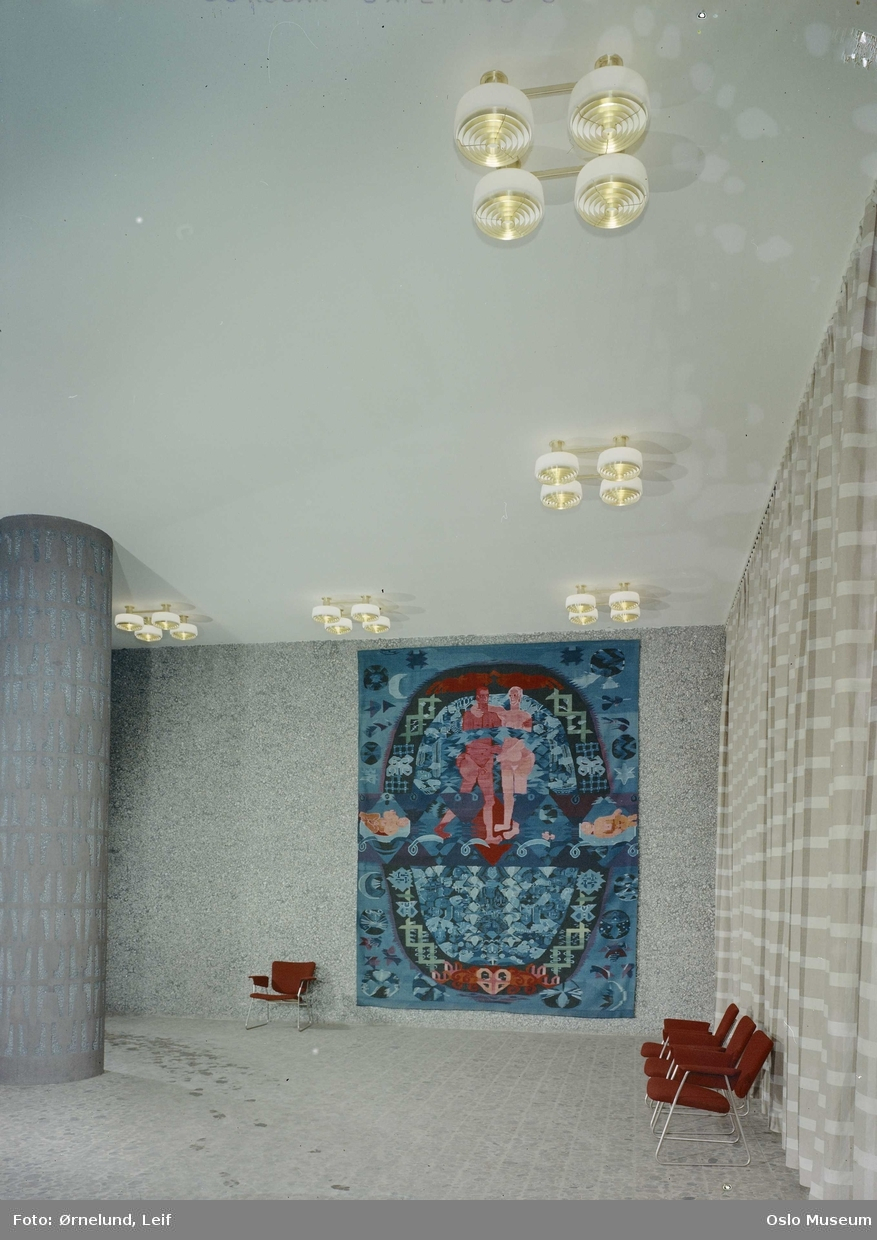
(Photo: Leif Ørnelund / Oslo Museum, via digitaltmuseum.no)
Perhaps this piece hit me the way it did because the 22/7 attacks have been on my mind as we approach the eighth anniversary (which is tomorrow, as it happens) and I had no idea the history of this piece so it caught me unaware. My very first visit to Norway was in November 2011, only months after the attacks, and I remember my friend Camilla walking me by the Government Quarter, where the damage was still visible, with many windows boarded up. The government has plans to demolish some of the existing buildings of the quarter and build new ones, but there will always be some things that bear the scars of the damage caused by that day, just as Norway itself carries them too.
The exhibition has left me wanting to dig deeper into Hannah Ryggen’s work, and I’ll likely go see it again before it closes next month. I’d also like to make the trip to the Hannah Ryggen Center in Ørland. Perhaps I can share more about Ryggen and her work later on. If you’d like to read more in the meantime, I found this piece quite interesting.
Leave a comment